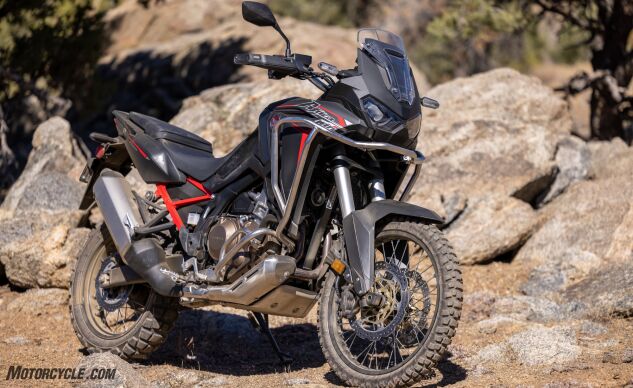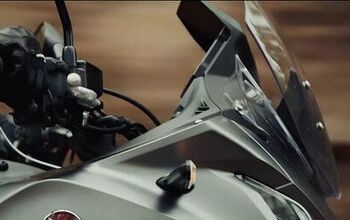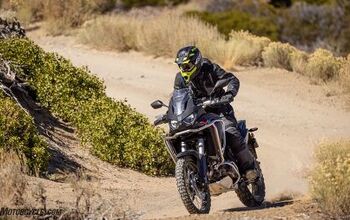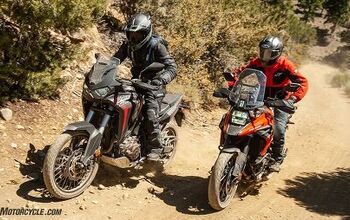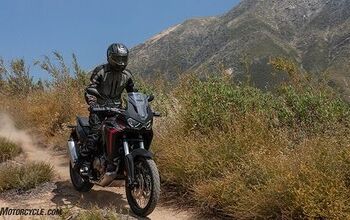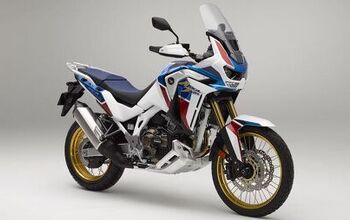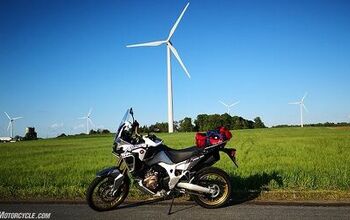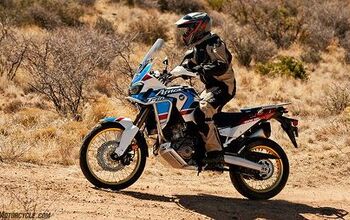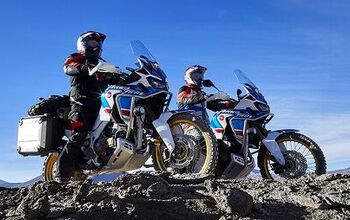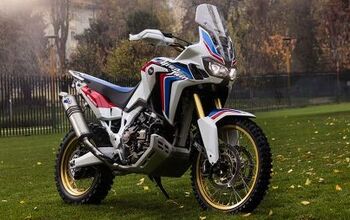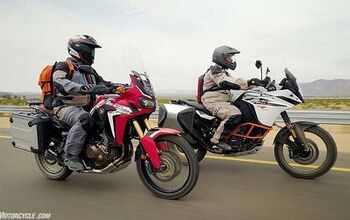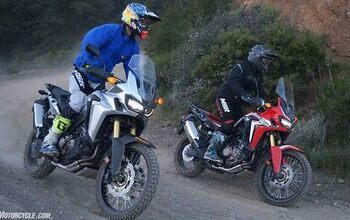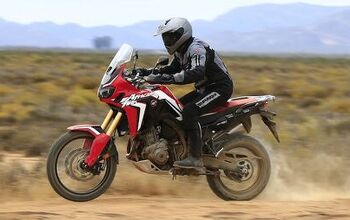Honda Africa Twin Motorcycles
The Honda Africa Twin, as we know it today, first hit the scene in 1986 as a Dakar-dominating 779cc V-Twin powered race machine. For four consecutive years, the then known NXR 750 would clinch victories in the world’s most challenging adventure rally.
This initial success led to the production of the 1988 Honda XRV 650 Africa Twin. Staying true to its adventurous roots, the model came equipped with a metal headlight guard, twin aluminum radiators, a high exhaust, skid plate, and an HRC-inspired “tricolore” red, white, and blue color scheme. The 647cc liquid-cooled 52° V-Twin was said to make 57 horsepower. The XRV 650 weighed in at just over 400 pounds and carried 6.3 gallons of fuel. This model would become one of the first production adventure motorcycles as we know them today.
After only two years of production, the XRV 650 was updated to the larger XRV 750. Displacement was increased to 742cc, but the engine remained otherwise the same 52° SOHC V-Twin with six valves and dual spark plugs, said to produce 62hp at 7500rpm and 45 lb-ft of torque at 6000rpm. Suspension was upgraded to a 43mm air-assisted telescopic Showa fork with 8.6 inches of travel with the rear using Honda’s Pro-Link adjustable monoshock which delivered 8.4 inches of travel. Brakes were also upgraded to a dual 276mm rotor, two-piston caliper set up in the front and a single 256mm rotor and single-piston caliper in the rear.
In 1993, the model received a thorough redesign which brought the center of gravity down along with the seat height and weight. The lower CG was said to have drastically improved the machine’s capability off-road while maneuvering at low speed. After a mostly cosmetic update in 1996, the Africa Twin would remain relatively unchanged until it ceased production in 2003. While it may be hard to imagine, given the popularity of adventure motorcycling these days, the original Africa Twins were never officially sold stateside.
In 2016 though, 30 years after the original NXR 750 had blitzed its way through the Sahara and into the history books, Honda released a new iteration of its storied adventure motorcycle, the CRF1000L – and it would be available worldwide. A thoroughly modern adventure machine, the new Africa Twin was powered by a 998cc Parallel Twin with a throaty 270-degree firing order that was said to produce 93.9 crank horsepower at 7500 rpm, and 72.3 lb-ft of torque at 6000 rpm. This 2016 model came with a host of electronic rider aids as well as two transmission variants: a standard manual and Honda’s Dual-Clutch Transmission (DCT). The DCT models would replace the clutch lever with a parking brake and offer a fully automatic experience or the ability to be shifted manually via buttons on the left switchgear.
In 2020, Honda released a thoroughly revamped Africa Twin featuring a new frame, cutting-edge technology, and a larger, more powerful 1084cc Parallel-Twin engine. This latest Africa Twin boasts the performance on-road and off that adventure riders had hoped for in the previous version. Despite the current trend in the middleweight adventure category, Honda has managed to produce an exciting, competent, tech-heavy machine that allows for adjustability that can suit a wide range of riders from experienced veterans to aspirant adventurers.



